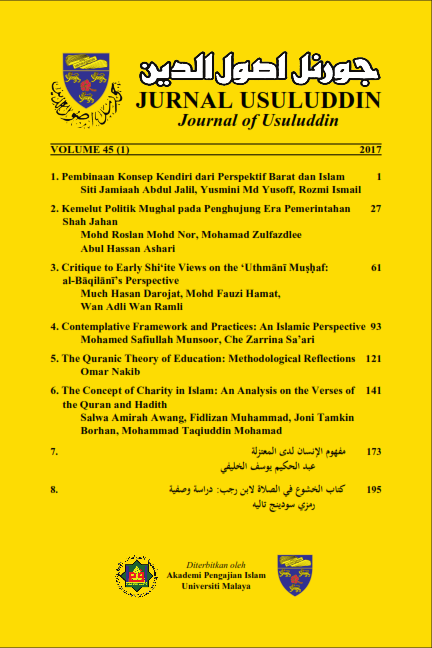Contemplative Framework and Practices: An Islamic Perspective
Main Article Content
Abstract
Contemplative practices form the cornerstone of Islam and infiltrate every facet of life. These can be categorized into seven main types of practices, ranging from stillness through generative, ritual, activist, relational and creative to movement. Yet these practices are not very well known as compared to Buddhist meditation, Hindu yogic systems or Christian monastic practices. The ‘tree of contemplative practices’ was used within the Islamic context to map out seven main categories of practice derived from the divine scripture, as well as the words and practices of the Prophet and the Sages. There are five fundamental obligatory practices, as well as six voluntary ones, aimed at cultivating the mind-body and the soul. Stillness practices form a special category that includes self-introspection, reflection, re-collection, absorption and meditation. These stillness and generative practices represent two sides of the spectrum manifested as silence of speech and of the heart, as well as the generative or collective practices seen here to forge a platform of solidarity. In Islam, contemplation pervades every aspect of life, which repeatedly evokes the divine and therefore can be termed ‘Living Meditation’. The key to these practices is to transcend one’s self or ego and progress to higher levels of consciousness, thereby gaining proximity to the Lord and gaining contentment, which is the quintessence of Islam. The emerging data from neuro-science and contemplative practices points to an intricate link between them, with positive effects on mind and body. This fact then augments the inward sciences (taṣawwuf) of Islam, which has its own theoretical framework and groups of practitioners. This calls for integrating the tools and methods linked to these inward Islamic practices within the formal and non-formal educational systems, which forms one of the most potent entry points. This will enable these practices to develop from a very young age with a sense of awareness and meaning (instead of blind following of the faith), and will feed into developing spiritual and material well-being as the child matures, enabling to produce a more well-rounded human being. This is one of the steps for reducing aggressiveness and radicalisation, while mental space is created for a more tolerant society.
